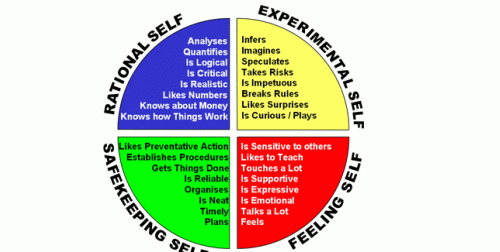Companies strive to be innovative, so much so that the word itself is often included in their mission statement. But what can businesses actually do to be truly innovative? Nina Aggarwal, founder and partner at Fusion Learning, offers practical advice on building innovation
How exactly does a company go about being innovative? Being innovative goes beyond defining the role innovation plays in the company’s goals or establishing the Responsibility Assignment Matrix (RACI). Indeed, innovation should flow through all elements of business and not sit at an individual or departmental level, it’s everybody’s problem and everybody is part of the solution. Here are some ways to create innovation within companies
Organise for innovation
It’s important your team’s thinking styles complement each other. Without a team that can communicate and work together, innovating can be tough. We call this whole brain branding which is based on the Herrmann’s ‘Whole Brain Thinking’ model (link is external). It represents a four colour coded metaphor of the brain, summarised simply as:
1) Blue: rational self – logical, critical, numerical.
2) Green: safe-keeping self–getting things done, organised, reliable and neat.
3) Yellow: experimental self–rule breaking, conceptualising, curious.
4) Red: feeling self–supportive, expressive, sensitive to others’ feelings.
Understanding individual thinking preferences across the four quadrants can help harness the mix of strengths in a team – or even establish the best blend in a team for innovation.
Does your current team have people who are a mixture of thinking preference types? Do you have the dominantly ‘blue’ analysts who will guide you on the risks along with sensory team builders who will help engage everyone even in tough times? Is there someone who prefers to think about timelines working in the team with the blue sky holistic thinkers. Even in absence of people with thinking preferences in all quadrants, the awareness and understanding of each other can help a team better appreciate the different perspectives that each other brings. That way everyone work together to form a whole brain brand team that not only has big innovative ideas but can bring them to fruition successfully.
Encourage employees to recognise their creative flair
Creativity isn’t exclusive to those more inclined towards using the right side of their brain even the most logical, analytical thinkers can be highly creative. It is important that companies encourage every employee to be creative.
Many dominant left brainers and people in number-crunching roles such as data reporting can question their ability to be creative. However, their creativity could come from finding new representations of data or identifying the best data sources to help resolve a business problem rather than generating hundreds of big ideas.
Consider also the traits of individuals: introverts apply themselves very differently to extroverts and no more so than in creative tasks. For people who prefer to reflect on ideas or who find their best thinking occurs in quiet times; being thrown into an offsite crazy brainstorm away day may not be the best way to get the best out of them. Consider how you mix up the environment and opportunity for everyone to contribute to the innovation challenge, shake up large group interactions with personal time or working in pairs or small clusters.

Engage the whole company
Innovation shouldn’t be siloed. Developing innovative programmes or ideas should not only be the remit of a particular department or person. A business trying to build a culture of innovation will fail if the responsibility of innovation is not a collective effort.
Companies that are serious about innovation can help themselves by encouraging every employee at the company to proactively be innovative irrespective of their level or role within the organisation. One option is to give employees the chance to flex their creative muscles by having the freedom to work on side projects which could lead to the development of new and innovative products. Even if it does not, the process of working on projects can lead to new insight about the company’s product or service.
Reward failure
Although it may seem odd to reward failure in a commercial situation, recognising that failure is part of the process and encouraging employees to learn from failed projects is important to prevent people switching off from the possibilities.
Encouraging employees to learn from risky projects that failed and to act on these learnings will help. Capability improvement in the field of innovation, rather than the bottom line delivery to be around the learning. Organisations that want to be innovative will applaud and learn from responsible failure.
Be responsive to change
Businesses and the markets they operate in will often go through periods of dramatic change. Changing customer tastes, volatile markets, unforeseen competition and technical advances often force companies to change. On average, it takes two to three years for employees to adapt to corporate-wide change initiatives.
Therefore, companies must have a leader who can adapt to change and effectively support those who report into them. If a company is to be innovative, its managers must be innovative themselves. Peer group and mentor support for them as they experience the changes they want of their teams can be as important to success.
Revisit your brand identity
It is important that companies revisit their brand identity even if their business is in a strong position in the market and profits are soaring. Innovation is never about resting on your laurels. The competitive and macro context is constantly shifting.
A company’s brand is essentially the face of a business. If the company’s brand does not reflect the innovation taking place within a company then customers may assume the brand is outdated. Is it time to renovate your brand?
See more at: https://www.b2bmarketing.net/resources/how/how-innovate#sthash.sMVcgT0U.dpuf